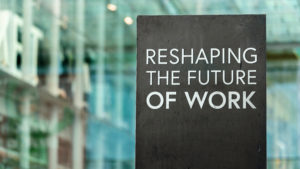Why working from home isn’t for everyone
As we all well know, the pandemic ushered in aspects of working life on a global scale that were previously unprecedented. 5.7% of workers reported that they worked exclusively at home January/February 2020, and by April 2020 that number rose to 43.1%. Whole workplaces were emptied out as offices went online and working went remote. In the aftermath of the pandemic, most workplaces have moved back in office, but the vast majority have kept a capacity for remote working that they may not have had before.

Is this a good thing? Is it working? Do workers actually prefer remote working? Let’s take a look at what we know.
What’s polarising about working from home?
There are many benefits of working from home which had people excited at the start of the pandemic. No commute, meaning hours of your working day are freed up; the possibility for more hours of sleep; a drastic drop in your carbon footprint. No need to dress up too nicely or plan your lunch in advance, no need to sit under fluorescent lights or sit opposite too-chatty co-workers. For some, hours became more flexible to fit around childcare and housework. At first, it seemed like an ideal situation.
Then come the downsides of working from home. Isolation—the only people you are around your day is yourself and whoever you may be lucky enough to live with. Lethargy, and the timelessness people began to feel in the pandemic of every week being the same, week in, week out. The blurred lines between work and home life meaning that people never felt rested—either they couldn’t focus on their work, or couldn’t stop thinking about their work.
So where does the truth lie? What is the reality of working from home?
How do we approach working from home in the future?
The reality is, working from home suits different people in different ways.
Studies have found that 85% of homeworkers wanted to use hybrid working in future, with younger people preferring office work and older workers preferring home working. Those in their twenties just starting to advance their career want to speak to people, have real life interactions, and have all the experiences of being in an office. Meanwhile middle-aged workers like being able to have more restful days at home. In both circumstances, offering hybrid working is the answer.
Proposing a hybrid working resolution that suits your workers whilst maintaining the same level of productivity is definitely possible. For example, capping the working from home days at two or three days a week, and requiring attendance on one or two specific days, means that you are able to have everyone in the office at the same time and create that interactive and friendly office culture that’s harder to maintain online. But you are also being flexible to the needs of your workers and how the modern worker enjoys working from home—if they’d prefer not to, they can spend a whole week in the office. If they find working from home helpful, the flexibility is available to them. Everyone’s happy!
For additional tips and information on how to improve the working from home divide in the post-Covid era, seek an independent HR advisor for guidance.


